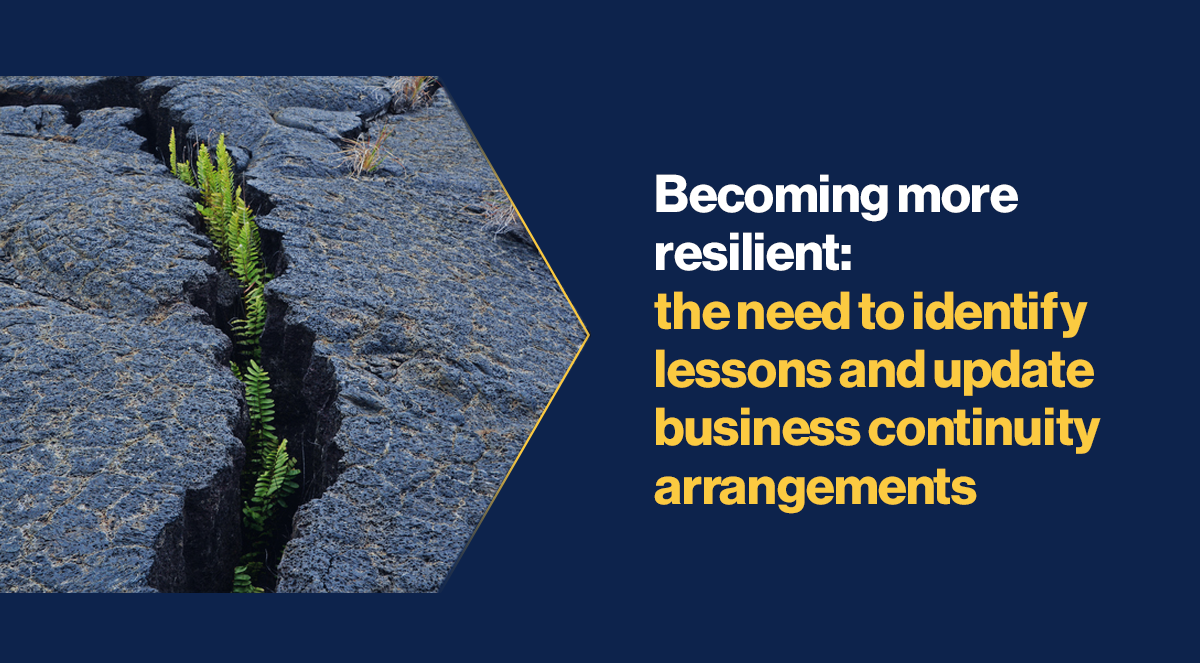Becoming more resilient: the need to identify lessons and update business continuity arrangements

Senior leadership teams in many organisations are already considering methods for capturing lessons identified from the COVID-19 pandemic and how they might plan the recovery phase of this unprecedented event. Business Continuity plans have been activated and many arrangements have had to be modified to cope with a changing situation.
Many business continuity plans appear to have lacked the detail needed to provide clear instructions for managing a ‘lack of people’ scenario over a sustained period. No doubt many reviews will be undertaken in due course, but here are some key actions that managers may wish to consider now:
- Capture the lessons identified and workarounds currently being used by managers to maintain their prioritised services.
- Make sure the contacts made during this time are recorded in business continuity plans now rather than waiting for a time when everything settles down. In reality, this “setting down” rarely happens.
- Assess and record the resources used to maintain the level of services over the course of the pandemic. Reflect if this was more, or less, than you estimated in your business impact analysis and note the reasons for this.
- Record what or who provided you with help (internally or externally to the business) to maintain your prioritised services.
- Document lessons identified regarding your communications processes – how did you keep your team updated, what worked and what might be improved. Be as specific as you can – this is about learning lessons, not a blame game.
- Consider what you are going to do with the non-prioritised activities that have been suspended and document options to address these.
- Draft a recovery plan for getting back to the new normality e.g. who, and in what order, you bring back services over the recovery stage.
- Plan for dealing with staff who have experienced bereavement. Some organizations may have had some employees that have died: this will affect morale and needs to be managed sensitively and consistently across the organisation.
- Coordinate with other teams and departments so that all the initiatives you are planning when you return to business as usual are implemented in a coherent and timely manner.
- Remember that you need to do all the above actions because there may be another incident that will disrupt your business in the near future. So, documenting now ‘what works’ (who will do what, what will you stop doing, and who do I need to tell) is vital.
In addition to these pointers, it is worth considering asking some horizon scanning questions such as how sustainable are your current solutions? How are your suppliers coping (and what if they fail)? Are any staff about to retire or leave to business? What will be the impact of the suspension in recruitment and staff development programmes? No one person can answer all such questions, but you need to know people who might.
Blog written by Martin Fenlon FBCI - Vista Business resilience Ltd

